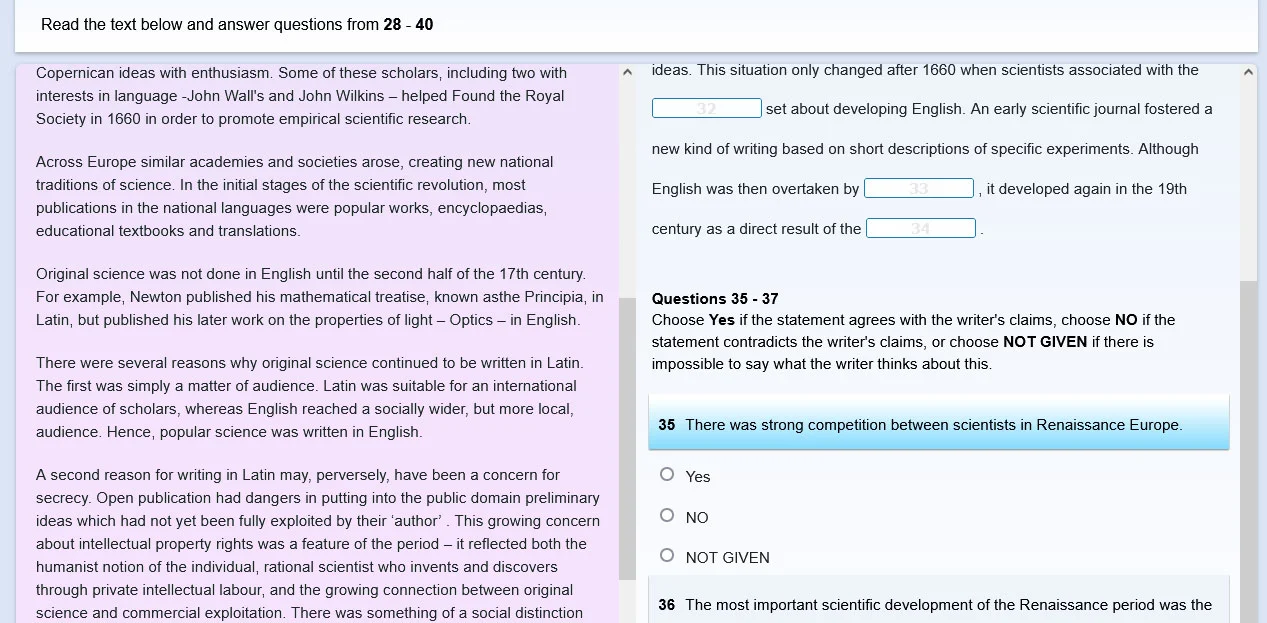
IELTS Reading Tips | Multiple Choice Question
How to master the Multiple Choice Question
How to master the Multiple Choice Question
- Multiple choices are answer options for a question. In IELTS Reading, the Multiple-Choice Identification question will have you choose one or more answers per question, amongst a list of options. It is essential that you read the instructions very carefully, as they will indicate whether you must choose one answer, generally amongst three to four options, or more than one answer, usually from a longer list of options.
- This question type can be challenging to some, as it requires an understanding of the general idea of the passage, and therefore strong skimming skills. There are, however, some strategies and tips that can help you complete this task successfully.

Useful Tips:
- It is of utmost importance that you read the instructions very carefully, as they will inform you of the number of answers you will need to choose. For the single answer style, the questions tend to be incomplete sentences, where you will be asked to select one appropriate ending to complete that sentence. For the more than one answer kind of task, the questions will normally look like actual questions, ending with a question mark (‘?’), and the instructions will indicate how many answers you must choose from a given list of options.
- This question type focuses on the meaning of the text. The questions (incomplete sentences) will summarise a point made in the text about a certain topic. The words in the questions will therefore not contain the exact same vocabulary as in the passage. Make sure you paraphrase (explain in different words) key words and phrases in both the questions and the answer options, so that those may be identifiable in the text.
- Keep in mind that there may be some language in the questions and answers that can be paraphrased (e.g. ‘search for’ can also be ‘look for’, or ‘seek’), but you may also come across some language that cannot be paraphrased, like names and dates. The latter can be very helpful when trying to locate them in the text, as they could be capitalised or contain numbers that will stand out in the text.
- Once you have studied the questions and answers and have skimmed the text, try and predict what the correct answer may be, and cross out any options that are clearly wrong or irrelevant. You may encounter some answers that seem very similar in meaning. In those cases particularly, paraphrasing is essential so that you can decide which answer is relevant and which is not. For example:
- 'Water is crucial for survival.'
'Water is used by all living things.' - In the example above, both statements talk about water being used for living, but the first one has a greater emphasis on the importance of water with the use of the word ‘crucial’.
- If you do find that more than one option could be applicable to the given question, mark the possible answers and look for their paraphrased key terms in the text. Once you find those, you may read carefully around those terms to decide which option is appropriate for your question. Check modals, such as could and may, as they change the meaning as well. For instance:
- 'Smoking causes cancer.'
'Smoking may cause cancer.' - While the first example is a certainty, the second example is a mere possibility.
- Read the incomplete sentences fully and carefully. If you read a question too quickly, you may think you got its meaning from its beginning, but there may be some words, like ‘but’ or ‘however’, that suggest that the information in the answer should contradict the incomplete sentence rather than confirm it. This may, as a result, change the content you will be looking for in the text.
- Skim but don’t rush. When you skim the passage, make certain that you consciously try to understand the content, so that you do not miss out on important information, misuse your time, or misinterpret the text. You may come across some distracting information that may seem relevant but does not contain the answers you are looking for, so read quickly yet efficiently.
- Spend 2 minutes at the most on text skimming. It may be helpful to read the first and last paragraphs of the passage, and the first sentence of each paragraph, which will give you a sense of the topics they cover.
- In the single answer style of question with four answers, there are usually two answers that are clearly wrong. You may cross out any obviously irrelevant answers, so you don’t get confused when choosing the final answer later, and transferring your answers to the answer sheet.
- Answers come in order. This should help with time-management and locating information in the passage with more ease.
- Make sure you know the type of information requested of you: are you looking for opinions or facts within the text? When you paraphrase the questions look out for terminology such as ‘think’ and ‘believe’ for opinions, and ‘demonstrates’ or ‘proves’ for facts.
- Now is the time to practice this type of question:
-
Clouds are formed when suspended water droplets and ice crystals condense in the sky. There is always some invisible water vapor in the air, which is the initial step of the cloud formation process. When temperature gets colder, the water vapour condenses and turns the vapour into liquid. The air in that area is saturated with vapour, which forms clouds.Choose the correct answer:
The first stage of cloud formation involves
0 comments
You must login to post comments!